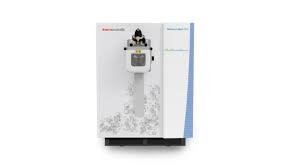Saturday, 15 November 2025
EPA/DHA Omega-3s: Trends and Opportunities for 2020
’New research and Market trend’, an analysis report by Catalent Omega-3 fatty acids are foundational ingredients in a range of dietary supplement and functional-nutrition formulations—and for good reason. A solid body…

’New research and Market trend’, an analysis report by Catalent
Omega-3 fatty acids are foundational ingredients in a range of dietary supplement and functional-nutrition formulations—and for good reason. A solid body of science—more than 40,000 papers and 4,000 human clinical trials backs their efficacy, and consumers appreciate their benefits.
According to 2018 proprietary research from Global Organization for EPA and DHA Omega-3 (GOED), the total global market value for omega-3s hit $1,290 million in 2017, up 1.8% from 2016. Dietary supplements accounted for the majority of that amount—52.9%—followed by infant formula (20.2%), pharmaceuticals (15.4%), pet foods (6.2%), and food and beverages (4.4%).
Omega-3 concentrates now make up a large percentage (36.8%) of the global market, indicating that consumers are “trading up” to get more eicosapentaenoic acid (EPA) and docosahexaenoic acid (DHA) per dose. While China, Asia Pacific, and the rest of Asia drive omega-3 growth, the United States remains the dominant player, responsible for 30.5% of the market’s global value.
As for further industry developments in 2019: “The market potential for omega-3s varies considerably on a global basis, with the largest growth coming from the Asia region. In the U.S., concentrates will continue to grow, primarily at the expense of 18:12 oils. The success of REDUCE-IT and VITAL should help spur ongoing interest in omega3s overall. The availability of additional algae offerings will also aid growth of the category for vegetarians or those with fish intolerances.” says Chris Gearheart, GOED’s director of member communications and engagement.
According to National Institutes of Health data, children and teens average about a 40-mg total daily DHA + EPA intake from dietary sources, while adults average about 90 mg.2 This is substantially lower than the 500 mg/day that the GOED recommends for health maintenance, and does little to fulfill potential daily requirements for these key nutritional factors.
Catalent, in partnership with Kappa Bioscience, developed two heart-health formulations that include all three nutrients: a single-capsule daily dosage combining 100 mcg of vitamin K2 (K2VITAL®) and 2,000 IU of vitamin D3 with EPA/DHA in a Vegicaps® capsule. The “double-strength” dosage contains 360 mg of EPA plus 270 mg of DHA, while the triple-strength formula delivers 650 mg of EPA and 486 mg of DHA.
Omega-3 DHA is also a critical building block of the eye. Nutritional supplementation—particularly with omega-3 fatty acids and macular carotenoids—can help maintain eye health. The carotenoids lutein and zeaxanthin concentrate in the eye’s macula, protecting the light and radiationsensitive portions of this structure from the gradual damage of lifelong radiation exposure.
Catalent worked with OmniActive Health Technologies to design a targeted eye health formulation that combines 250 mg of algal DHA, 25 mg of lutein, and 5 mg of zeaxanthin—in the form of Lutemax 2020TM—with 10 mg of astaxanthin. Astaxanthin is another antioxidant carotenoid that supports not only the antioxidant function of lutein and zeaxanthin, but also the structural integrity of the formulation’s DHA, as well. One vegetarian capsule constitutes a daily dose and provides important protection for eyes in the digital era.
Technology
Tetra Pak opens Product Development Centre in France
Nov 13, 2025 | Company News
MENU ORDER AI to launch app aimed at GLP-1 users and health-conscious diners
Nov 10, 2025 | Company News
Food Testing
Intertek acquires Costa Rican testing business Suplilab
Nov 07, 2025 | Company News
Thermo Fisher Scientific launches Orbitrap mass detector for food safety testing
Oct 24, 2025 | Company News
ADM advances quality capabilities with opening of new Central Milling Laboratory
Oct 16, 2025 | Company News
More Popular
Abbott launches new and advanced Ensure Diabetes Care
Nov 14, 2025 | Company News
Herbalife expands Liftoff energy line with new flavours
Nov 14, 2025 | Company News






